#Slugblasters is cool
Explore tagged Tumblr posts
Text
A good TTRPG system is like a vehicle. Or a tool. And like a good tool, it has a purpose, and things get weird if you start using it outside of that.
You don't do the Tour de France on an omafiets. You don't use a screwdriver on a Torx bolt. You don't drive a Nissan Leaf offroad up a mountain. You don't make your desk chair out of straight, flat shapes.
I mean, you CAN, but forcing tools benefits nobody. Most people can handle maybe 5%~10% of forcing. When they gotta. But do it more, and it starts to annoy. It stresses the tools. It damages the thing they're making. You strip the screw of its fit, the tool of its shape, the chair of its structure. Everyone loses.
Of course, people who never played a Not-D&D cannot imagine that it's D&D that's bothering them. After all, all they know is hammers. They might know something is wrong, but blame themselves or something. That's why people tell them to play a Not-D&D. Because until they've used a wrench to tighten a bolt, or learned how an socket wrench is GOAT, they won't know how fucking ASS it is to turn a bolt with a goddamn hammer. Turns out, they love fastening them... with a proper tool that doesn't make them pull their hair out.
That was my experience, at least, and it probably saved me from quitting forever.
Gonna give another shoutout to Slugblasters, man is it nice that my players don't need constant fucking reminders and if they do I can just rattle of the 2-5 short rules and... oh, we're done, they know everything. Don't even need to look at their sheets to see their modifiers. No stupid math. Just "what's your highest die" and done.
Like, for real, I'm not running a video game or dungeon thing here, I wanna run some fun hoohaa foolery kickflips, and D&D ain't none of that.
Running D&D in 2024 is like, the player community collectively convinced each other that dungeon crawls, resource management and attrition are bad, so now everyone runs games where characters can expect to get into one or two fights a day and characters are never stretched for resources, and most Reddit threads about D&D are GMs asking for help challenging their groups because of said ignoring of the resource management aspect and getting told that a good GM could make it work so obviously they must be a bad GM.
#I once burnt out writing species stats in D&D adn I realized it was too much work and overhead to make it balanced#like for real that was my first burnout#Slugblasters is cool#Or Yeld#Or Urban Jungle#uuuuuuuh what about Apocalypse Keys?#Yes sure do it#self-inflicted is the right verb
7K notes
·
View notes
Text
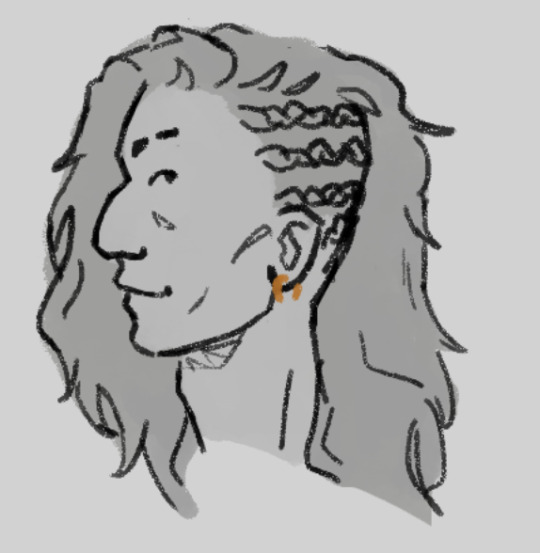
i had a slugblaster (a lovely ttrpg) session with som friends and drew my grit girl (andy, short for andres). leaving this here
also some things happened and i was being held by another PC from falling off a building, they were hanging off of my SHOE by wrapping their camera around them, shoe was stuck in the WALL (those were good shoes, perfect for walking on walls, provided you didnt FALL OFF THE SHOES)
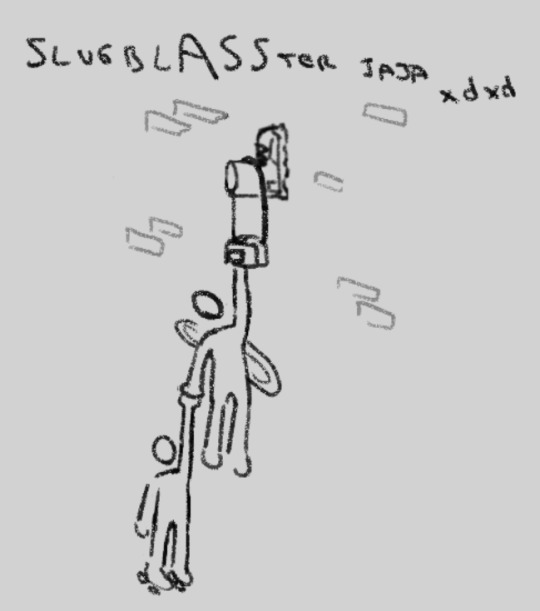
#check this one out yall.#its a cool system#patopq#my art#slugblaster#posting this mainly for me :)#no one will get this one. only 5 people in this world understand this and thats what i love about ttrpgs
6 notes
·
View notes
Note
So, I went to a game store, and I asked if there were any good beginner games for someone who tried the DnD Essentials Kit and found it too complicated, and you'll never guess what one singular game they suggested!
THEME: Simpler Games than DND.
My friend, I’m not a very good guesser, but I hope that I am able to present you with some games that will give you what you’re looking for.

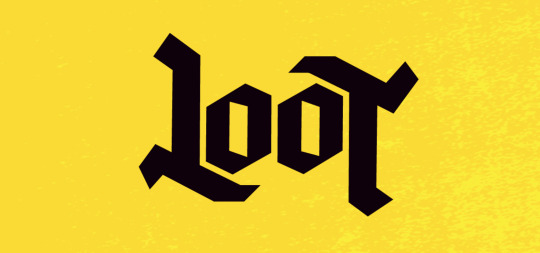
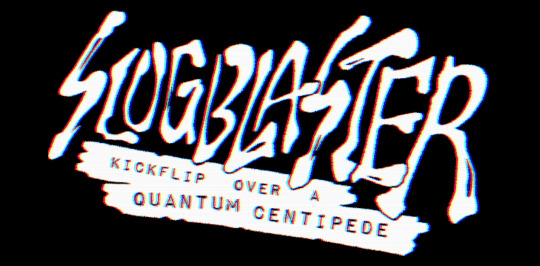
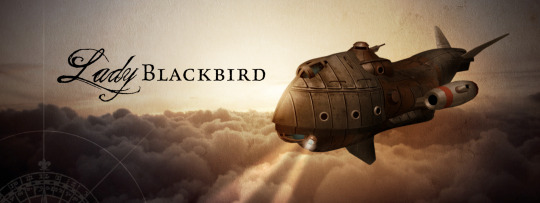
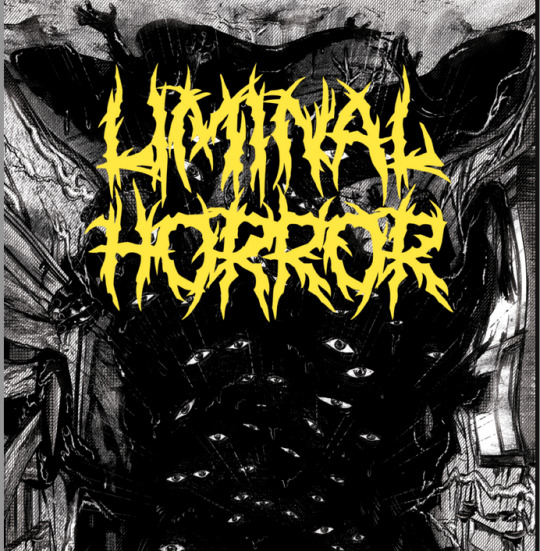
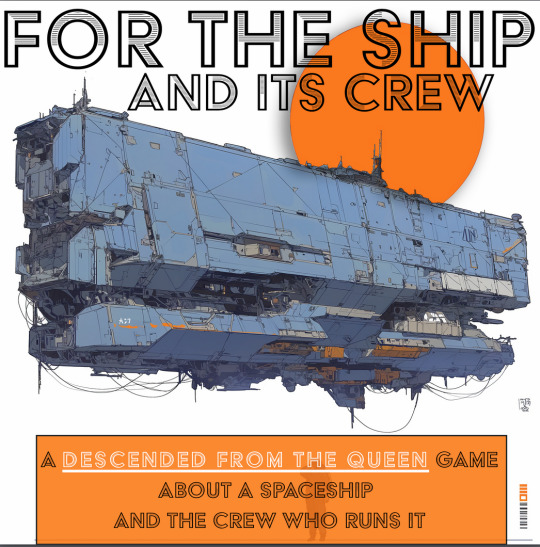
24XX: Chaos Unit, by polyhedralmice
Deep under the busy streets of Sapien City is the headquarters of the Vermin Squad, the espionage wing of a secret organization of urban animals known as the CHAOS Unit. They capitalize on the fact that vermin are virtually invisible human inhabitants of the city and use they use their street smarts to run vital missions for the unit. Raccoons, opossums, pigeons and squirrels each play specific roles and together form teams that take on the most vital of missions. From intercepting life-saving pizza orders to rescuing their colleagues from the dastardly Animal Control, there is no task too daunting for the brave animals of the Vermin Squad. Every night teams are sent out on their missions, and this is the story of one of those teams. Nothing will stop these brave agents from successfully completing their tasks (except maybe a humane trap baited with peanut butter).
CHAOS Unit is a spy themed hack based on Jason Tocci’s 24XX.
24XX games are great for groups that love different-sided dice. In general, you only have a few skills for your character that are outside the normal parameters (upgraded to d8 - d12), and the success threshold is the same for pretty much every roll. The challenges and situations of any given scenario are typically presented as roll tables, allowing the GM to come up with an adventure just by rolling a few dice.
CHAOS Unit has just a few character options, some simple gear options, and a comparatively light-hearted premise. It’s a great introduction to the system, and learning how to play one 24XX game makes every other 24XX game a piece of cake to learn, even if they include new rules.
Loot, by Gila RPGs.
LOOT is a fantasy TTRPG by Gila RPGs that combines looter shooter mechanics with west marches vibes. When a rebellion toppled a lich overlord and torn down his city, the people were left with a lot of loot, and a lot of problems. That's where you come in.
Get some friends together, fight some monsters, deck your characters out in cool loot. Do it all over again.
Even though LUMEN uses grid-based combat, your character’s stats are simplified, reduced to a few things: health, armour, and three action types: force, flow & focus. Your stats themselves come from the items that your carry - your loot.
Your loot is organized through slots on your character sheet: you can only carry so much, so you’ll have to think carefully about what kind of stat bonuses and abilities you want. I find that a visual inventory can make it easier to keep track of everything you have, and can help some players learn how to think strategically. If you like the fantasy and strategy that exists in D&D but don’t want to do nearly as much math, you might be interested in LOOT - although the lack of dice is certainly a big change.
Slugblaster, by Wilkie’s Candy Lab.
In the small town of Hillview, teenage hoverboarders sneak into other dimensions to explore, film tricks, go viral, and get away from the problems at home. It’s dangerous. It’s stupid. It’s got parent groups in a panic. And it’s the coolest thing ever.
This is Slugblaster. A table-top rpg about teenagehood, giant bugs, circuit-bent rayguns, and trying to be cool.
Forged in the Dark games can be tricky to introduce to a new table, but Slugblaster is one of a few that I think can do the job. It’s a streamlined version of the system, that takes away a lot of the crunch that comes from Stats, Position, and Effect, and boils it all down to Kick and Boost. It also streamlines harm into 2 levels of slams, and keeps stress and downtime to a procedure that you can follow step-by-step when you finish a run. Finally character creation is very easy: you only make few choices in terms of abilities, and many of these choices are descriptive, rather than mechanical.
One thing I’ve noticed about games with “simpler” rules systems is that they typically do require a bunch of improv, which can be scary for new GMs. Slugblaster isn’t that different in this regard, but it does have a few things you as a GM can prepare beforehand if you want to make things easier for yourself. For example, you can set up your map of the different dimensions beforehand, including the doorways that the teens can get through. If you know that the teens get back to your home dimension without going through Operablum, then you can prepare a few location - specific threats to confound the teens as they try to get back in time for dinner.
Another strength of these games is that typically, if a player wants to do something, they just have to be able to describe how they’d do it - you can then work backwards using the gear & resources on your sheet to give you some dice to roll, as well as the logic of the game world, to figure out what happens next.
Lady Blackbird, by John Harper
Lady Blackbird is on the run from an arranged marriage to Count Carlowe. She hired a smuggler skyship, The Owl, to take her from her palace on the Imperial world of Ilysium to the far reaches of the Remnants, so she could be with her once secret lover: the pirate king Uriah Flint.
Lady Blackbird is the first game I ever played, and it’s a game I fell for - hard. It involves rolling pools of dice that you pull from descriptive collections of tags assigned to pre-generated characters. It simplifies game-play by taking away the step of character creation, and gives the group a pretty solid story to pick up and follow wherever your heart may lead.
While the rules of the game are fairly simple, I think that as a GM, you’re going to need to be comfortable with a fair bit of improv to make this work. The game has some excellent pieces of advice on how to come up with scenes for the characters, and even includes some example complications to throw at the party. I’m really glad this was my first game because from the beginning, it affirmed that roleplaying games are a communal experience, and even if the characters and the starting scenario are already written for the group, the players have a lot of freedom to decide who their characters are, and what they’re going to value.
Liminal Horror, by Goblin Archives.
There’s a strange comfort to ambiguity. To stand at the threshold between states of what was and what’s next, to inhabit the places of transition. But you’re never truly alone here. There are things that hunger within the dark places. Strange creatures and mysteries lie in wait and tumbling into the wrong place at the wrong time may put you on the path towards doom.
Grab your flashlights and blood splattered jackets as you try to make it through the night. Beware, snapping bone and rending flesh are often the simplest outcome. While there may be great power within these places… not all mysteries can be solved and not everyone can be saved. Above all, there are fates far worse than death.
LIMINAL HORROR is a rules-lite, adaptable Survival-Horror roleplaying game about normal characters and their struggles against the things that go bump in the night. The game focuses on surviving the weird and Investigating horrors while blending simple, old-school inspired rules with modern, narrative first principles. Survival is not guaranteed and those that do make it through the night are often forever changed.
In Liminal Horror, character creation is rather quick, often easily generated using a few dice rolls. For most tasks, your characters will roll a d20 and try to get a number lower than one of their three stats, so when you get started, teaching the game should be pretty simple. Of course, since it’s a horror game, there’s more than just trying to roll under a stat: characters will find themselves subject to the consequences of being exposed to horrors that are far beyond the limits of human experience. As a result, characters will find themselves dealing with two different kinds of harm: stress & fallout. These two harm systems will make the stakes feel real, and they’ll also inflict changes on your characters as you play.
Liminal Horror has a few things going for it. The basic rules are fairly straightforward, but they’re also free. The game is meant to be paired with pre-written adventures, which often include place descriptions, NPCs, and adventure-specific consequences to torture the characters with. A lot of the adventures available come with a price tag, but if you want to try out the system, there’s a couple of free ones out there - I recommend Messenger National Park, by capacityforwonder.
For the Ship And Its Crew, by Adeline Fowl Games.
We've crewed this Ship for years together. We've seen wondrous sights, gotten ourselves into seemingly insurmountable trouble, and have owed our fair share of creds to the wrong people. And yet, still, we fly. But after all these years, our past may be catching up with us. As the missiles tear across starlit space, we'll be forced to ask ourselves: What will we do, for the Ship and its Crew?
This is a hack of For the Queen, which mostly involves answering prompts, using something like a card deck, or in this case, a digital hosting service. Your group is telling a story by taking turns answering questions, which makes the game fairly easy to teach, even to people who don’t have a lot of roleplaying experience.
These kinds of games can also be played very quickly, which might also make it easier to introduce to folks who aren’t used to sitting around a grid and calculating resources for 2+ hours.
Other Recommendation Posts To Check Out…
Easy To Teach Recommendation Post
First Time GMs Recommendation Post
Little Reading or Writing Required Recommendation Post
101 notes
·
View notes
Text
Have you played SLUGBLASTER ?
By Mikey Hamm

"In the small town of Hillview, teenage hoverboarders sneak into other dimensions to explore, film tricks, go viral, and get away from the problems at home. It’s dangerous. It’s stupid. It’s got parent groups in a panic. And it’s the coolest thing ever. This is Slugblaster. A tabletop RPG about teenagehood, giant bugs, circuit-bent rayguns, and trying to be cool." - Taken from the Slugblaster website.
83 notes
·
View notes
Text
What's cool about Slugblaster (okay, one of many cool things) is the way it inverts the in-character stressfulness of the gameplay from Blades In The Dark.
In Blades, you go on jobs to gain cash and build up your gang, but by the end of a mission you're probably a battered, bruised mess of nerves, you've absolutely gotta take some time to relax, maybe let loose, and possibly see a back-alley doctor about those ribs. Missions are rewarding, but also demanding!
But over in Slugblaster, lots of things can give you wounds (a.k.a. Slams) - a fight with your parents, late homework, dropping your phone in the gutter, whatever. The best way to clear those? Go on a run with your crew. A few sick tricks later, and when the run is over, all those slams just evaporate. Because the way to deal with the stresses and pains of everyday life is to go and do something crazy with your friends! It's both incredibly accurate to the genre, and it feels really real!
(of course, while you're away the Trouble's probably been building up, so no doubt your parents will be pissed that you snuck out to another dimension...but wouldn't life be boring if everything was simple?)
13 notes
·
View notes
Text
SLUGBLASTER Game of the Year Edition
One of my all-time favourite TTRPGs is getting a second printing.
Slugblaster is a forged in the dark game about teens sneaking into other dimensions, doing tricks, trying to be cool, hoverboarding, and avoiding curfew. It's got all the best coming of age story features with a healthy dose of humour and technicolour science fiction.
It's one of the funniest RPGs I have ever read. The deluxe version comes with a dang pizza box GM screen, dice, and awesome stickers.
(also I wrote a bit for it and did some proofreading) but you should still get it, it's amazing.
100 notes
·
View notes
Text
Maybe I'm just an old fogey who can't play an RPG without looking for the Dungeons and/or Dragons, but I just don't get the appeal of building mechanics, especially character-advancement mechanics, around specific plot points, which seems to be a popular trend these days.
I can understand the concept of building mechanics around a character's particular type of DRAMA. Masks primarily defines it's characters by "What sort of teen-superhero drama are you, personally, dealing with", and that makes sense to me. The character whose drama is around maintaining a secret identity has stuff around their secret identity, the character whose drama is around losing control of their powers has stuff around their powers going haywire. What I don't get is games that seem to expect you to basically write out your character's intended arc beforehand, and then gate mechanics around hitting those plot points. I was watching a review for an RPG called Slugblasters about being radical teens doing interdimensional skateboard shenanigans, where the different "Classes" are primarily based around character archetype rather than ability. Each class had a class-specific advancement track of specific plot points, at least two of which had "At this point your character leaves the group for a while, until you buy the NEXT tier of this ability and get to have a big moment where you come back!" And to me, that kind of defeats the purpose of organic storytelling that is so crucial to RPGs. "Hey guys, my character sheet says that my Pride and Stubbornness needs to alienate your characters leading to a big fight. Don't worry, the next time we level up I can buy the scene where we reconcile and our bond becomes stronger than ever". The idea of playing through that feels, I dunno, stilted to me? Like, it's cool as hell when that stuff happens in an RPG because it happened organically and you had fun telling the story. Having specific mechanics about it feels like it would just cheapen the experience.
3 notes
·
View notes
Text
I am really, really proud of this meatspace zine a friend and I put together for slugblaster. It's free! You should look at my art!




Not only was it super fun to do messy, unplanned collage, but writing for Slugblaster is always a fun time. Really can't say enough about how that game took the things I like about Blades in the Dark and made them better, while cutting away the chaff and adding some cool new stuff.
43 notes
·
View notes
Text

We are blasting it sluglike! The first part of our Slugblaster gameplay is up, as our teens start their speedrun. Can they stay safe? Can they stay fast? And most importantly: can they look cool doing it?
#actual play podcast#slugblaster#everyone say thank you to Emily who was down to the wire to release this on time
3 notes
·
View notes
Text
youtube
In the small town of Hillview, teenage hoverboarders sneak into other dimensions to explore, film tricks, go viral, and get away from the problems at home. It’s dangerous. It’s stupid. It’s got parent groups in a panic. And it’s the coolest thing ever.
The Fiction First Network plays Slugblaster (backerkit for a second printing coming soon!), a tabletop roleplaying game about teenagerhood, giant bugs, circuit-bent ray guns, and trying to be cool. We hop into The Golden Jungle, a multicolor rainforest hiding the ruins of an advanced civilization, where decommissioned gundam sleep under blankets of moss. We do sick hoverboard tricks over a crocodile infested river, launch ourselves out of a giant Metasaur mouth for clout (popping out of animals is really big right now) and try our best to make friends on the flipside of our home dimension.
#indie ttrpg#ttrpg#slugblaster#forged in the dark#blades in the dark#actual play#fiction first network#i'm not in this one but i'm there in spirit (also running OBS)#Youtube
6 notes
·
View notes
Note
You mentioned that dnd is a bad system for beginners (which I 100% agree with. It’s was my first and I still barely grasp the rules), what ttrpgs do you think would actually be good for beginners?

alright i’ve had a few asks asking after TTRPG recs with different criteria so here’s some good TTRPGs FOR BEGINNERS:
Dream Askew is a GMless game about being part of a queer commune in the post-apocalypse. it’s great for roleplay--it’s diceless, with all mechanics centering around spending tokens to have your character do something cool and gaining tokens by playing into their flaws--and it splits the burden of the GM position by having players pass around responsibility for invidividual threats and setting elements like ‘raiders’ or ‘the psychic maelstrom ravaging th world’. gay af also
Trophy Gold is a dark fantasy game about pushing your luck and losing your humanity out of desperation. it has extremely simple rules, an inbuilt system for advancing scenes in the form of the ‘hunt’ roll, and the only good take on a ‘spell list’ i’ve ever seen in an RPG. look out: this one is pretty grim and designed to often end in tragedy.
Slugblaster: Kickflip Over A Quantum Centipede is the exact opposite tonally. it’s about being in a 90s teen movie from the future, doing sick hoverboard stunts in alternate dimensions, and having drama with your parents. it’s goofy and cheesy in the best ways and it has a lot of heart.
Crescent Moon is about kids going on a magical adventure. you want whimsy, you want magic, you want a dedicated mechanic for employing the power of friendship? play Crescent Moon. it has a great system for tracking ‘items’ as little cards. plus the art is lovely. i cannot give any more comprehensive review than: it sparks joy.
Masks: A New Generation is the absolute peak of PBtA design. it’s about superheroes, but unlike something like mutants & masterminds it’s not concerned with the specifics of superpowers on a mechanical level, but on the emotional conflicts that come with being a superhero in the vein of the teen titans. if you’re interested in powered by the apocalypse games (and imo you should be! they’re a great place to start) this is the premier example imo.
235 notes
·
View notes
Text
Slugblaster GOTY Edition just achieved its funding goal today, securing a second printing of a new hardcover edition with Mythworks Publishing (publishers of CBR + PNK and The Wildsea).
I wanted to take some time to talk about why I love this game so much. I was lucky enough to grab a copy of the first printing and also got to do some writing and proof reading for the game.
The Premise is Sick as Hell
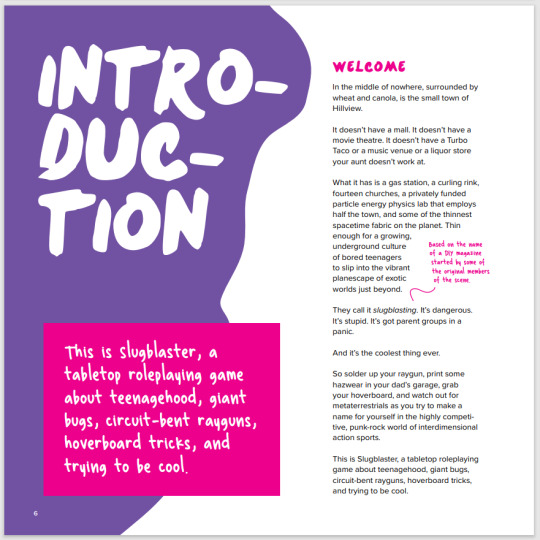
Mikey, the author, has thought about this game and the world a lot, and it shows. The game is lousy with style, from the writing to the layout to the art. But the premise itself is a fun and compelling sandbox where you are encouraged to push your character into taking risks, lying to your friends and parents, getting in trouble, getting hurt, and then getting better. It's everything good about coming of age stories, sci-fi tales of the multiverse, and fiction first RPGs.
Innovative Design
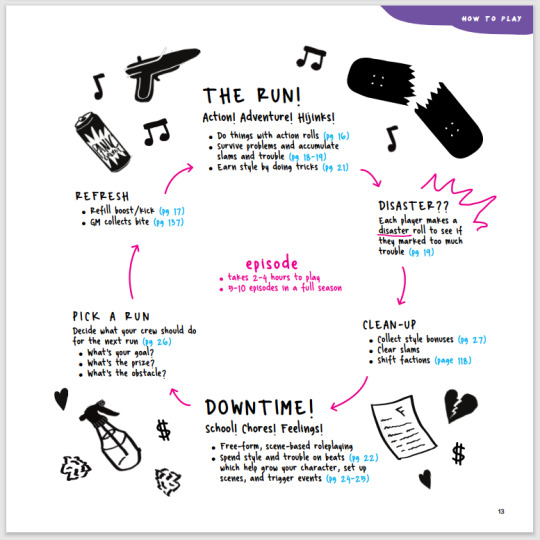
Slugblaster is based on the Blades in the Dark RPG rules, and does a lot to change up everything from the cycle of play to the action roll. It replicates the score-downtime-score cycle but moves and modifies the rules in ways that create thrilling and dangerous runs, heart felt downtime scenes that cannot be avoided, and natural conflict that will be resolved one way or another.
Rolling dice is easy and fun, with every playbook able to take risks and modify the rules in their favour. Not only that but each character gets a signature device, like a negafriction sword or a hardlight board, that gives them an edge when doing hoverboard tricks or fleeing creatures like math panthers.
Incredible Writing
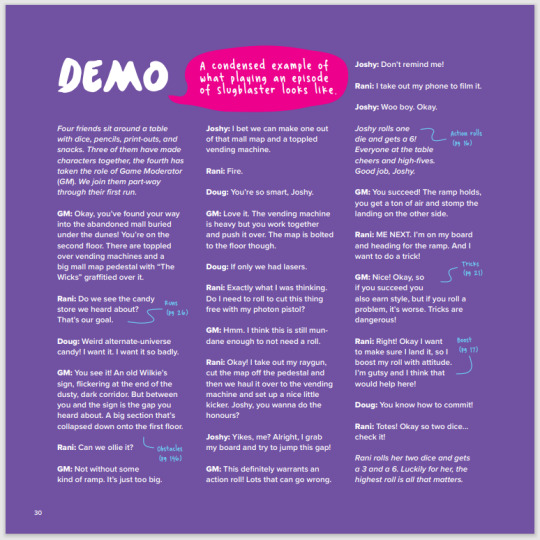
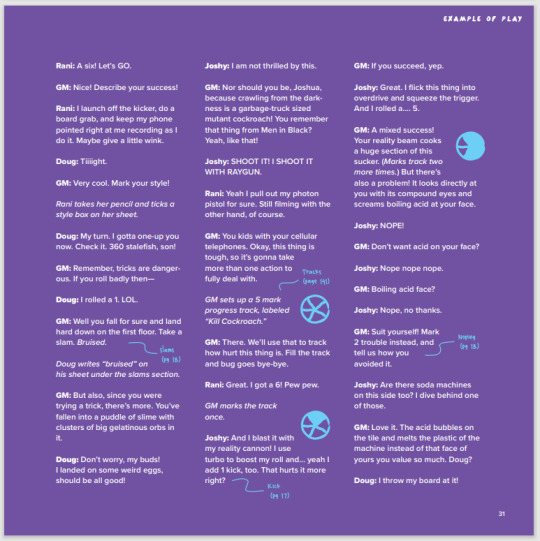
This is hard to showcase but I'll just show the first few pages of the first example of play in the book. Mikey has a talent for writing and comedy, and absolutely everything in the book, from the rules to the playbooks to the examples and creatures, are easy to read and laugh out loud hilarious. Even if you never get a chance to play it, you won't regret owning a copy, just so you can get a smile on your face when you need it.
Amazing Art

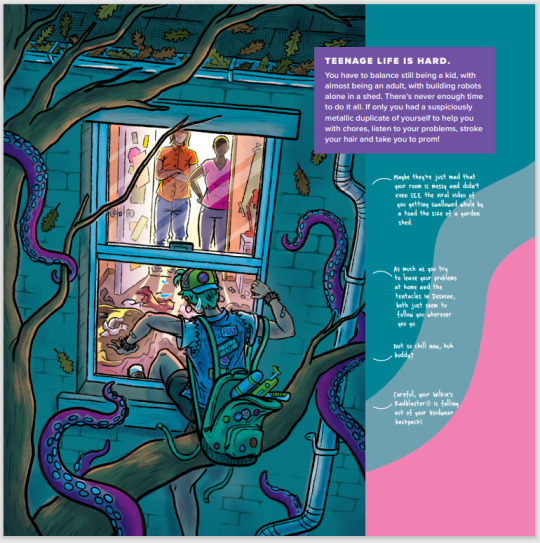
Mikey has put together a murder's row of artists for this game. It's colourful and cartoony and does a great job of communicating the early 90's era that Slugblaster inhabits. The second edition is gonna get even more art, with maps you can use to illustrate the different worlds you'll explore.
Additional Goodies
This new second edition of the game comes with all sorts of awesome add-ons if you want 'em. Things like:
dice
stickers
a pizza box GM screen
maps
custom fingerboards
a dang skateboard
So please do check it out, spread the word, let your weird ttrpg friends know about Slugblaster.
48 notes
·
View notes
Text
Game Roundup 2023: Part 4 (The Final Part)
Okay, this final post is going to be (unfortunately) mostly just a list of things I've read because it turns out I've read A LOT this year! First, let's highlight a few things.
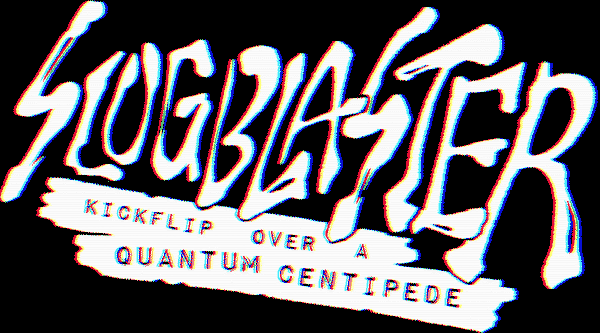
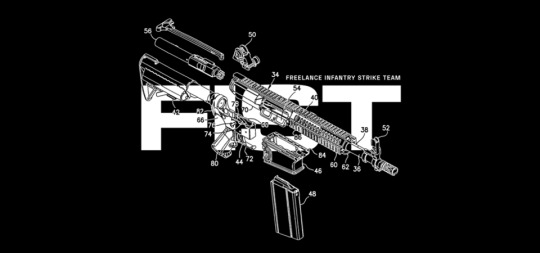

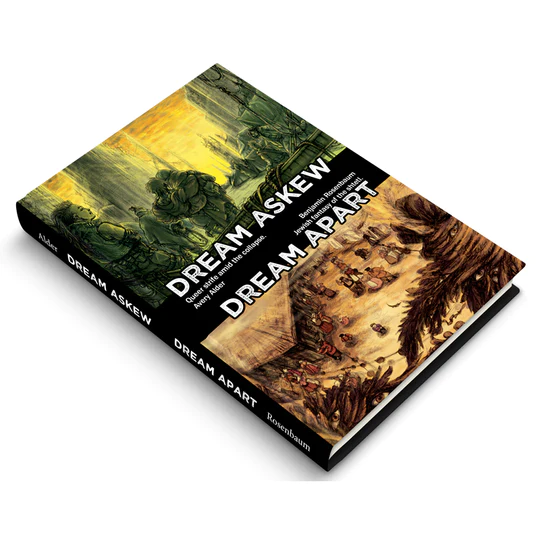
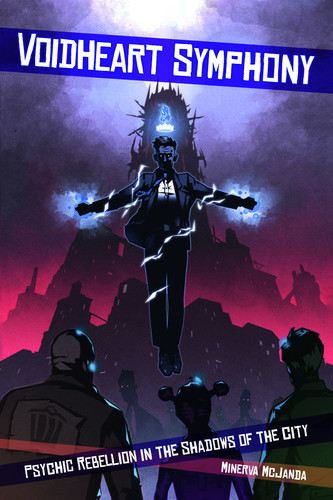
FIST: Ultra Edition by CLAYMORE
This game is mechanically tight. Play all your action team/spec ops/military sim without too much sim fantasies! It's already spawned a ton of additional content and hacks!
Slugblaster by Mikey Hamm
Teens! Dimensional skateboarding! Goopy creatures! What DOESN'T this game have? It's Forged in the Dark but honestly it iterates on that system in a way that is perfect to me. Really slims things down AND makes downtime better with built-in character arcs to pursue. Plus a thriving fan community that's made a lot of cool content (yours truly included).
Voidheart Symphony by Minerva McJanda
This was pitched to me as Persona the TTRPG. (I have not played Persona). The thing I find fascinating about it is that you're using different rules depending on whether you're in The Kingdom or The City. It's gorgeously laid out, and I'm excited to run it!
Dream Askew/Dream Apart by Avery Alder and Benjamin Rosenbaum
I had to pick up the OG Belonging Outside Belonging game(s) at GenCon and I waasn't disappointed. One game has you playing a bunch of queer post-apocalyptic survivors. The other has you playing an alternate history of a Jewish settlement.
CBR+PNK by Emanoel Melo
Another one I picked up from GenCon! The design on this one is TIGHT. if you have the chance to get a physical copy, do it! The presentation is unrivaled. This is cyberpunk FitD.
Other games I've read (and I'm sure many many many are missing!)
Inevitable
Running Together, Leagues Apart
Spellchitects!
Badger + Coyote Duet RPG
Three Kobolds in a Trenchcoat
Unreality/Strictness -- The Single-Page Version
Totally Real Human Adults
The Dark Below
Memories by Moonlight
Wild Duelist
Hack the Planet!
Have You Heard About the Beast?
Wizardry and Bureaucracy
Spire
Part 1 | Part 2 | Part 3
Here's to more reading next year!
42 notes
·
View notes
Text
One day left to back SLUGBLASTER GAME OF THE YEAR EDITION.
I’m really excited about this game getting into more people’s hands so please take a look and spread the word.
19 notes
·
View notes
Text
I wrote a Slugblaster supplement with a friend!
Inspired by downtown St. Louis and the gulf between its reputation and reality, and in honor of Sk8 Liborious Church.
In July 2023, the community hub that is Sk8 Liborious burned down. They're down, but not out - there's plans in motion for reconstruction already!

Sk8 Liborious is a skate park, artist center, and community hub, among other things - and it's inside one of the oldest churches on this side of the Mississippi.
The zine contains:
1 new hometown, Arc City
1 new world, Agoria
2 new signature items
1 new attitude playbook: The Mouth (which you can pick up��for free, if you'd rather)
If you'd like to donate independently and keep an eye on the fundraiser, you can check it out at this link.
This project is a collaboration between Lady Tabletop and Metal Steve, with thanks to Mikey Hamm for letting us create in the cool game space he's cultivated.
Normally I put up community copies, but this piece is specifically for fundraising!
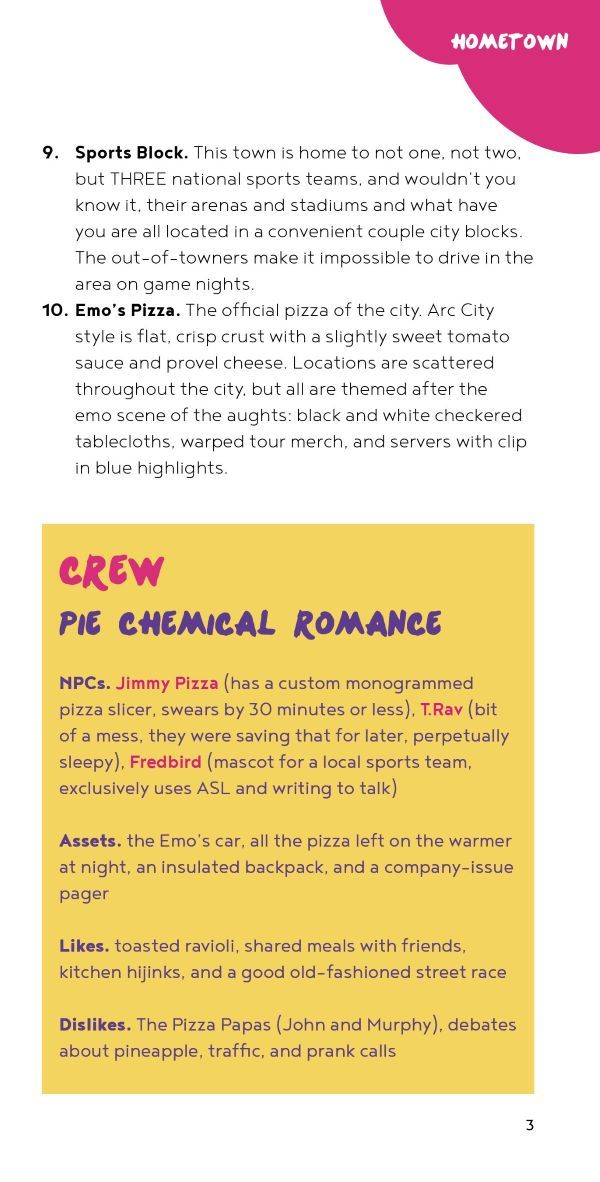

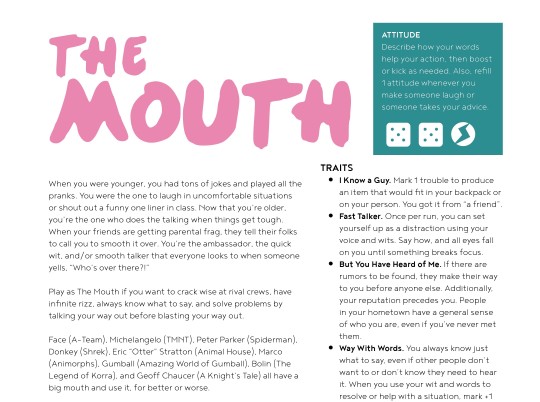

31 notes
·
View notes
Text
By the Dice: Slugblaster
As we leave Slugblaster behind this week, let's talk about its probability engine!
This is going to be a shorter one than Ten Candles was, and by a good margin---which is okay! Ten Candles was almost entirely dice-driven, and rolls corresponded directly to game length, so there were some cool side topics we needed to delve into; this shorter version is probably going to be more representative of these dice chats going forward. With that in mind:
Slugblaster uses a version of the Forged in the Dark engine, which for those unfamiliar, is the framework behind Blades in the Dark, and similar games. What that means for us is that we're operating on a d6 dice pool system, reading only the highest die rolled. A 6 is a success, a 4 or 5 is a success with a problem, and a 1, 2, or 3 is a failure (also with problem!).
Quick disclaimer: Keep in mind that we aren't focusing on the immaterial here---'immaterial' doesn't mean 'unimportant,' but while something like kick helps you out narratively (and mechanically in terms of style gain or filling tracks) it doesn't actually change your odds on individual rolls, which are our general focus.
Got that? Let's see some charts!
And by 'charts' I mean 'chart,' really, because there's only one thing we're really concerned about: how do those dice pools impact your odds of success?
Answer: pretty strongly!

[fig 1: a table of max roll probabilities for dice pools ranging from 1d6 to 6d6]
You're probably not seeing a 6d6 dice pool in Slugblaster without getting a lot of boost from your teammates, but the high-pool cases are still worth considering.
One of the interesting bits about this, at least to me, is that the 3d6 to 4d6 barrier is where a shift starts happening---the odds of a conflict (4-5) or triumph (6) both climbed for the first set of pool increases, but as soon as we pass to 4+d6, conflict odds start decreasing; you have over a 90% chance of succeeding in some form, and additional dice will mostly help remove the chance of a problem.
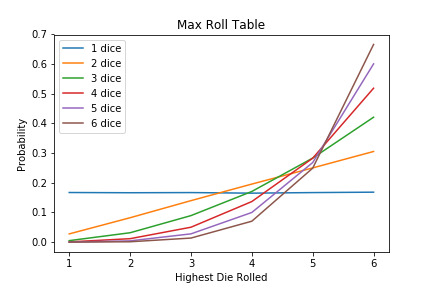
[fig 2: a chart of max roll probabilities for dice pools ranging from 1d6 to 6d6]

[fig 3: a cumulative probability chart for dice pools ranging from 1d6 to 6d6]
For the more visual folks out there, here's some charts about it: these are both saying essentially the same thing, but in two different ways. Fig. 2 tracks the odds of any particular number being the highest in a pretty straightforward way. Fig. 3 tracks the odds that you will roll at or above a certain number---you'll always roll at least a 1, so it starts at 100% for any pool size. As they increase, we can see that curve becoming tighter; in a hypothetical situation where we had more than 6d6, we can pretty easily envision what that evolution would look like.
So, what do we take away from this?
First, that teamwork, boost, and anything else that could give you an extra die is incredibly important---up to a point. That first additional d6 to your pool ups your chances of overall success (at least a 4) from 50% to 75%, straight-up, and the 3d6 boost to about 87% is nothing to sneeze at, either. The Chill's boost ability in Turbo---always rolling with an extra die---is huge in terms of its impact for that player specifically; they simply always start with better odds, and by a fair margin. The Guts ability to add a d6 if they're trying to look cool does the same thing: you will be measurably and substantially more likely to succeed.
However, continuing to boost after a certain point becomes less about your odds of success (which are pretty good after about 3d6!) and more about eliminating problems. You're always welcome to add those additional dice, either from your gear or your personal pool, but they're likely to have less of an impact from a strict succeed/fail perspective. (Of course, problems can still be pretty substantial; while we're mechanically focused during our dice chats, let's not forget the potential narrative fallout!)
Disaster rolls, which start showing up in the third act of a run, are always going to follow that 1d6 curve (i.e. a straight line), so rest somewhat assured that piling on the trouble isn't a slippery slope---at least not here. Your odds of passing a disaster roll will get worse, but it will be by the same amount every time.
Epilogue rolls are another story---in Slugblaster Turbo, which we played, style and trouble are rolled as pools to determine epilogue high points and low points. These follow the dice pool stats above: those first few points of trouble are likely to make your low point substantially worse, but even a little style is likely to boost the high point.
Final Thoughts
There's an assertion on page 14 of the core book that "you're going to fail a lot, and you're going to roll more 4s and 5s than anything else," and fun fact: that's true!

[fig. 4: a table of max roll probabilities for different allowed dice pools, starting from 1d6-2d6 and proceeding to 1d6-6d6, assuming equal dice pool distribution over the course of a game.]
The table above uses the assumption that there is some theoretical pool maximum, and that all dice pools during a game are equally likely to be of any size between 1 and the maximum. That is, for a 2d6 game, there is a 50% chance of rolling with a 2-die pool, and a 50% chance of rolling with 1. While this assumption may not be perfectly accurate over the small-number statistics which describe any individual game, they should be reasonable for our larger-scale purposes.
And what we find is that it takes the inclusion of the 5d6 dice pool for 6s to pull even, and 6d6 for them to nose into the lead! You really are most likely to be rolling 4s and 5s in most games of Slugblaster that you play.
With that said, two final notes:
First, those success probabilities are still pretty good, even with problems. You might get into trouble, but by and large you'll succeed more often than you fail.
Second, failure is not the end. You may get scraped up, you may get into trouble, and you may have to find another way around an obstacle, but failures can and should still be interesting, and even fun! This isn't just a mathematical game; it's also a narrative one.
Armed with this knowledge, go forth and blast it sluglike!
#actual play podcast#slugblaster#i kept meaning to get this out during our actual releases and then that kept not happening haha#but here it is!#much shorter one but i still think it's fun#also: are my numbers wrong? are there other axes of analysis you want to see? contact us!
2 notes
·
View notes